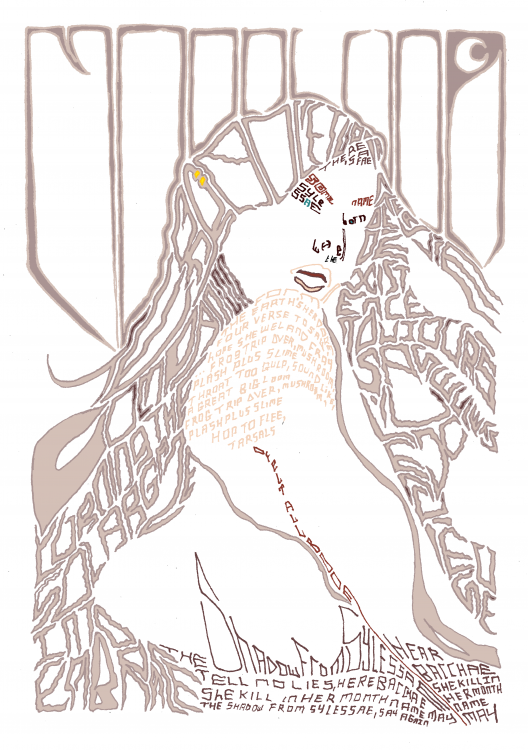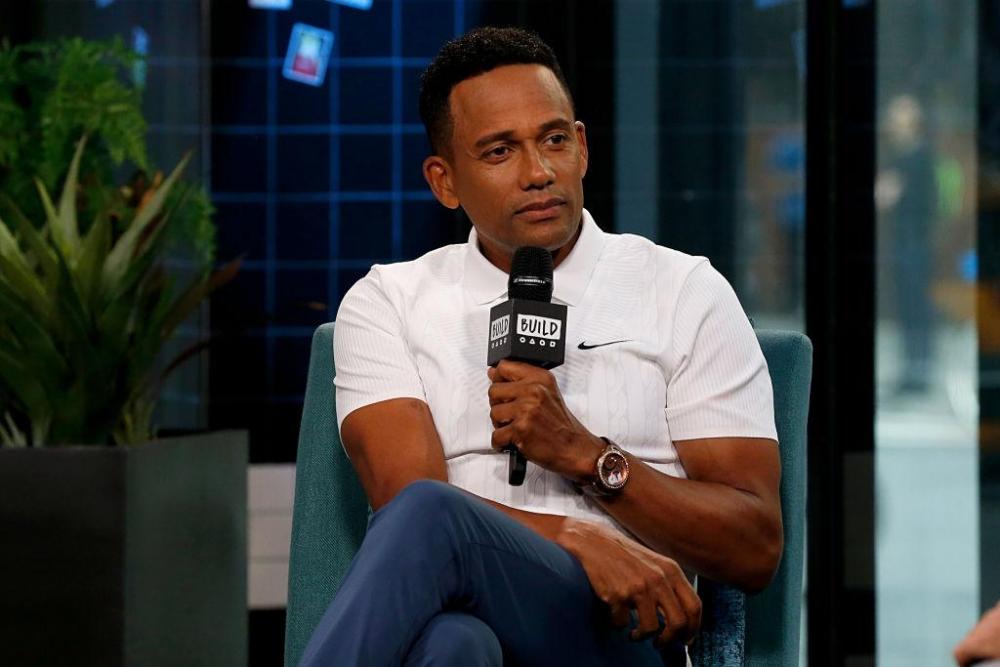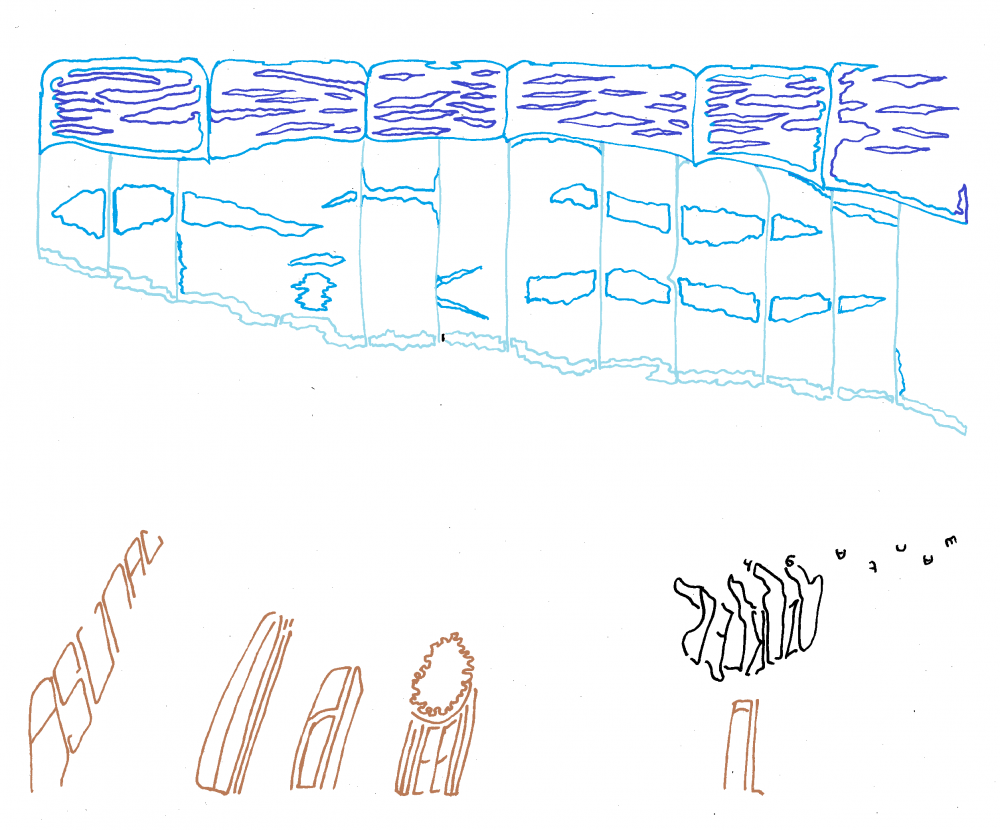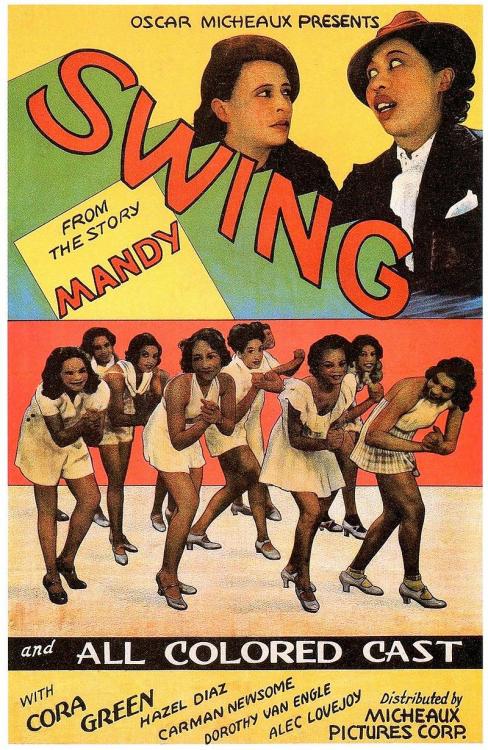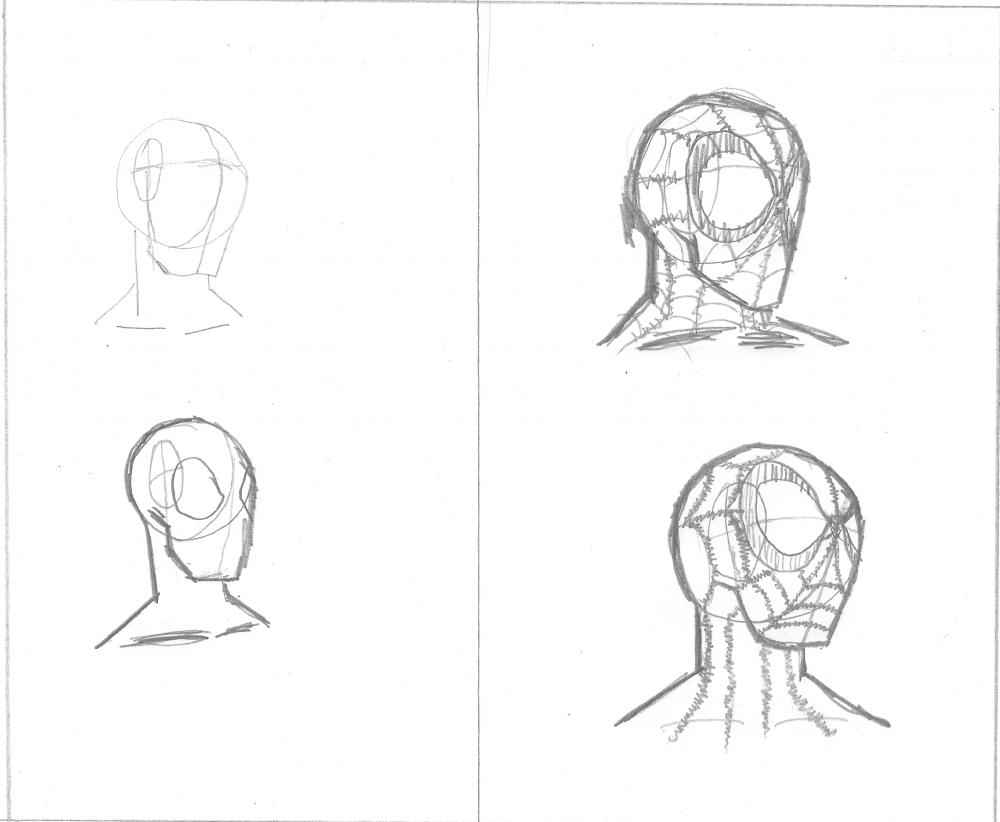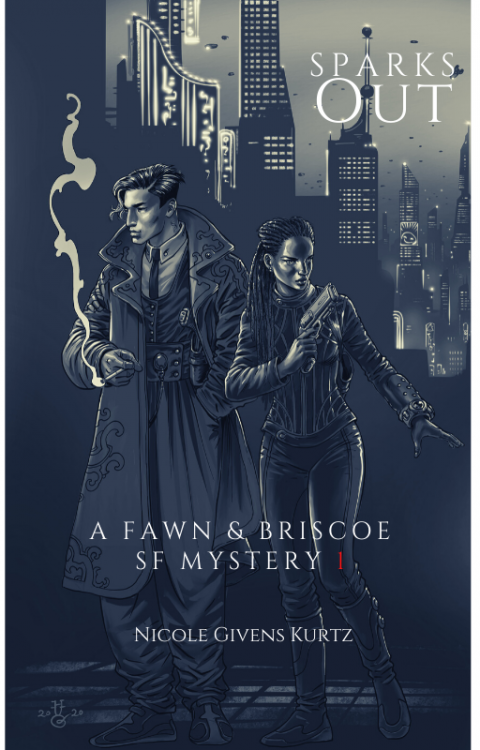-
Posts
2,424 -
Joined
-
Last visited
-
Days Won
91
Content Type
Profiles
Forums
Blogs
Events
Status Updates posted by richardmurray
-
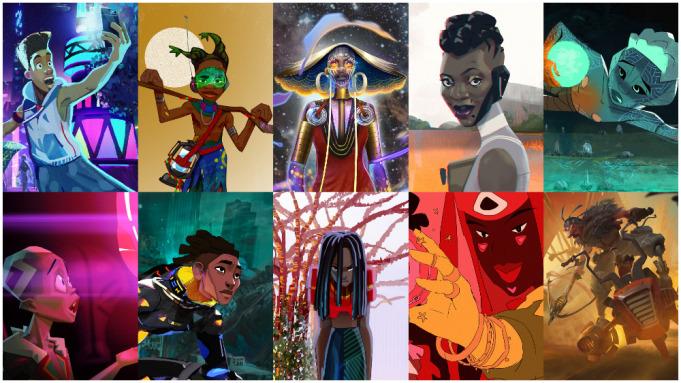
Disney Taps Top African Toon Talents for Animated Anthology ‘Kizazi Moto’
Disney has tapped top toon talents from across the African continent for “Kizazi Moto: Generation Fire,” a Disney Plus Original anthology of animated films set to premiere on the Mouse House’s streaming platform in late 2022.
Inspired by the continent’s diverse histories and cultures, the 10-part anthology brings together a slate of rising animation talents from six African nations to produce action-packed sci-fi and fantasy stories that will present bold visions of advanced technology, aliens, spirits and monsters imagined from uniquely African perspectives.
Oscar-winning director Peter Ramsey (“Spider-Man: Into the Spider-Verse”) will serve as executive producer, with Tendayi Nyeke and Anthony Silverston as supervising producers. Cape Town-based animation house Triggerfish, which received the prestigious MIFA Animation Industry Award in Annecy this year, will be the lead studio for the anthology, working in collaboration with animation studios across the continent and globally.
“We are bringing the work of a visionary new generation of African filmmakers to Disney Plus,” said Disney Plus and ESPN Plus president Michael Paull. “In addition to delivering thrilling animation for fans of all ages, this collection of ten original films taps into the Afrofuturism phenomenon which was turbo-charged by Marvel’s ‘Black Panther’ and reflects Disney’s ongoing commitment to partnering with leading global talent to tell the stories of the world from fresh and authentic points of view.”
“I’m really pleased to be part of a ground-breaking, fresh and exciting project that’s aimed at exposing the world to a whole new wave of creativity and invention from a place that is just ready to explode onto the world animation scene,” said Ramsey. “The films in the anthology kind of run the gamut when it comes to science fiction. There are stories that touch on other worlds, time travel, and alien beings, but all of these genre conventions are seen through an African lens that makes them totally new. I can’t wait for people to have their minds blown and say, ‘I want more!’”
More than 70 leading directors and creators across the continent were invited to pitch their ideas, after a multi-year research phase that included input from Ghanaian comic book blogger Kadi Tay, award-winning Congolese animation supervisor Sidney Kimbo-Kintombo (“Avengers: Endgame”) and Namibian-South African producer Bridget Pickering (“Hotel Rwanda”).
The process was curated and produced by the team at Triggerfish, including supervising producer Tendayi Nyeke, head of development Anthony Silverston, and Kevin Kriedemann, who proposed the initial idea for the anthology.
15 shortlisted projects were mentored by Ramsey and the creative teams from Triggerfish and Disney. The final 10 films are from Ahmed Teilab (Egypt), Simangaliso “Panda” Sibaya and Malcolm Wope (South Africa), Terence Maluleke and Isaac Mogajane (South Africa), Ng’endo Mukii (Kenya), Shofela Coker (Nigeria), Nthato Mokgata and Terence Neale (South Africa), Pious Nyenyewa and Tafadzwa Hove (Zimbabwe), Tshepo Moche (South Africa), Raymond Malinga (Uganda) and Lesego Vorster (South Africa).
Each film will be roughly 10 minutes long, and together will comprise a feature-length anthology of original animation that will be released as a Disney Plus Original across the globe.
“‘Kizazi Moto’ derives from the Swahili phrase ‘kizazi cha moto,’ which literally translates as ‘fire generation,’ capturing the passion, innovation and excitement this new cohort of African filmmakers is ready to bring to the world,” said Nyeke. “‘Moto’ also means fire in several other African languages, from Rwanda’s Kinyarwanda to Shona, a Zimbabwean language, speaking to the pan-African spirit we hope this anthology embodies.”
The announcement comes on the heels of a presentation on Wednesday by Walt Disney Animation Studios’ chief creative officer Jennifer Lee, pan-African entertainment company Kugali filmmakers Ziki Nelson, Hamid Ibrahim, and Tolu Olowofoyeku, WDAS VFX supervisor Marlon West and head of story Natalie Nourigat, who presented a sneak peek during the Annecy Animation Festival of their groundbreaking collaboration, the futuristic animated series “Iwájú,” which is slated for a 2022 release on Disney Plus.
ARTICLE URL
< https://variety.com/2021/film/global/disney-plus-kizazi-moto-annecy-1234998580/ >
-
Tumblr List of music concerning Black culture
-
My submission for the Sylessae draw in your style invitational on deviantart https://www.deviantart.com/hddeviant/art/Sylessae-Draw-THis-In-Your-Style-884297630
My version of Sylessae in my calligraphic art style

HEre is the poem I title: Sylessae
Moon
Terran Companion
Turning the solar gaze into embrace
Luna
L'etudiant de la vie d'existence
Toujours, silencieuse aux secrets
There is a fae, some name Sylessae
born when the moon form, the Earth's her dorm
Four verse to say, hope she wel and fray
... Frog rtrip over, mushroom, plash plus slime
Throat too gulp, sound like, a great big loom
Frog trip over, mushroom, plash plus slime
Hop to flee, tarsals, felt all boom
The Shadow from Sylessae
tell no lies
hear Bacchae
She kill in her month name may
The Shadow from Sylessae
say again
hear Bacchae
she kill in her month name may
If you want to read more of my poetry , please utilize the following https://www.kobo.com/ebook/poetry-or-more-1 -
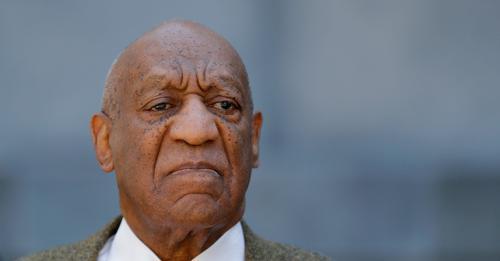
Many people have opined that nothing has changed for them concerning Bill Cosby
That is the same for me, but it is necessary to say why. My why is the following:I have never been a cosby fan. IS he a financially successful black entertainer? yes. Has he helped many people in the black community? yes. Do I know bill cosby? no. Do I think he is guilty or innocent of crimes? no to either, cause I do not know. ... I am happy for his personal success or those he helped. I know most people in the entertainment business have activities that are best not known, so Bill Cosby may be guilty , but he also may not. I love my father, growing up I didn't need nor do I need know a fictional black father. I knew my bloodlines history as a child. I am proud of it. I think for many black people, unfortunately, Bill cosby the man or the huxtable fictional clan on television as a number 1 show filled many roles that I did and do not need. Black people: having a home that has signs of opulence, graduating from college, having no one drugs in the house, a home with two black fiscal earners, in a neighborhood with little crime , are not things Foreign to me. And I had one better, cause I gre up in a black community, not a white one like the huxtables. I do comprehend that for many black people Bill Cosby served a role that they needed and still need. How many black women today still talk about the black man who isn't a doctor/layer , isn't a loving father, isn't a loving husband, isn't a provider, isn't an assister.
The legal scenario he was in seemed contrived, but when you put lawyers/fiscally wealthy negro/accusation(s) together you get explosions. To women... or anyone violated/abused, I repeat, go to the law immediately. THe one constant with many of the cases in the so called MeToo era is the temporal delay. I have seen photos of abused women, who went to law enforcement. Their bodies showed an evidence that would had put Cosby or Weinstein in jail instantly.
Abused people, go to la enforcement. -
Superman will be Black
VIDEOMY REPLY
He makes a few points.
1st- news to me, I didn't know superman is going to be negro. I concur, old characters develop followings over time. King Arthur is not gay. If someone tried to make it where he was sleeping with lancelot it will be rejected.
2nd- he is correct that initially black comic book characters have made money. But he misses DC/Warner bros problem.
Take away Milestone, take away Marvel characters like Blade or the XMen or Spider man that now all are under Disney's roof. Name the top 5 DC black characters?
Warner bros. see's money in courting the non white male. But DC Comics don't have a black panther/blade/storm/Luke Cage/Moonstone/Psylocke. so...
3rd Both DC or MArvel are guilty of trying to court non white audiences by forcing a race change on a character. Look at what marvel did with captain marvel, a character that has a long complicated history of changes, and made a muslim girl captain marvel while captain marvel is still the blond haired woman flying in the stars...
4th- As Anthony McKay said, I am paraphrasing, I Am not playing Falcon, Falcon is being played by me. I think sometimes you get a personality like Momoa playing a lower character like Aquaman. You see the same thing with Deadpool/Doctor Strange/Black Widow/Nick Fury... as the actors who played them dominate their perception but that is cause none of them were well known outside comic circles beforehand, and the actors who portray them have a large media profile or following before them. That is why Downey Jr was able to dominate Iron man in a way he wasn't sherlock holmes. I never forget people saying with the first film, what is this martial arts? I have to admit the street fighting took me by surprise. I never forget how some fans ecried when Jackman was in his last wolverine depiction. Wolverine is not dead, but the audience is influenced.
I have to admit the street fighting took me by surprise. I never forget how some fans ecried when Jackman was in his last wolverine depiction. Wolverine is not dead, but the audience is influenced.
5th- I end with , the video creator is correct, the goal is not to make money. The goal is to supercede the money made and that is where the problem resides. If Warner Bros/DC focused on a Black Lightnin project, as he is their first black titular character. It will make money but it will not make superman money and that is what the studios fail to realize is their problem.
Going forward, an issue about new characters. I argue that DC spent too much time rebooting batman/superman and gave to little time to bringing in new characters. why is it: martian manhunter/green arrow/hawk woman or hawkman/black canary/mister terrific not have a film yet? These characters are as old and still remembered, I argue DC or MArvel is missing a trick by focusing on a narrow set of characters. TO be blunt, huntress/black canary warrant a standalone movie, that birds of prey was premature. Marvel's problem is simple, can they move on from iron man/captain america. Can Marvel let characters die and stay dead, that is the question. The avengers don't need captain america or iron man or vision or black widow to come back. I think they should all stay dead. The black widow movie is a temporal prequel. I think they need to respect the world they created and make Shuri black panther. It makes sense. Tchalla died by some rare space disease or whatever. Make sHuri the black panther. harry potter fans still complain about gambon as dumbledore -
Well... it is another Friday, another day to love, to Oxum, Oshun, Freya, or Venus, another day to Kizomba!
A 2015 routine from africadancar. showing Victoria side Silvio; they love popping; their sequence starting around 1:45 i never saw before; the attempt alone was worth a try, but not an easy form. -
IN Honor of Sharknado, what about Alligado?
Yesterday, July 3rd, in 1843, an alligator was reported to have dropped from the sky after a storm picked it up. What about a prequel to Sharknado, Alligado!!!
What say you?

ARTICLE
CHARLESTON, SC – According to the National Weather Service Charleston office, on July 2, 1843, there were reports of an alligator falling from the sky during a thunderstorm in downtown Charleston.
A search for the event, turned up an old newspaper clipping from the Time-Picayune in New Orleans. The Time-Picayune republished an article which originally appeared in “The Charleston Mercury” a local paper founded by U.S. Representative Henry L. Pinckney.
The article described a strong thunderstorm that developed on a very hot July Sunday. St. Paul’s Church was reportedly struck by lightning but not harmed. No one was reported dead following the storm, but an alligator appeared at the corner of Wentworth and Anson street in downtown Charleston after the storm had cleared. And while no one saw the alligator actually fall from the sky, the writer states that “and as he couldn’t have got there any other way, it was decided unanimously that he rained down.” That and the look of wonder and bewilderment on the alligator’s face led to idea that he had come from the sky.The working theory is the gator could have been picked up by a waterspout the formed over a near by river or creek and was dropped on Anson Street as the spout dissipated. But since no one saw the gator fall from the sky, it could also be he just got lost in the blinding rain.
-
Hill Harper Launches First Black-Owned Digital Wallet And Cryptocurrency Exchange App In U.S. History
from Njera Perkins < https://www.linkedin.com/in/njera-perkins >
Famed actor Hill Harper is getting into the money game by way of financial technology that’s powering a newly-launched digital wallet for investors of color.According to a press release, Harper announced the launch of The Black Wall Street app just in time for Financial Literacy Month as a means to empower Black and Latinx investors and contribute to closing the racial wealth gap in America. This feat marks the first-ever Black-owned digital wallet and cryptocurrency exchange platform to exist in the U.S.
Through this digital fintech platform, Harper hopes to create the world’s largest investment and financial literacy curriculum/toolkit for communities of color to use across the diaspora.
“Our technology seeks to replicate the brick and mortar Black Wall Street, as a digital ecosystem that will galvanize the financially excluded and directly stimulate the economic growth and spending in marginalized communities everywhere,” Harper shares in a statement. “With the Black Wall Street technology, we seek to make obsolete payday lenders and other financial predators plaguing our communities, while simultaneously creating cross generational wealth transfer, for people who have historically been taught to work for our wages instead of making our wages work for us…because Black Cash Matters.”
The Black Wall Street app is both named after and inspired by the legacy of the Greenwood district in Tulsa, Oklahoma that was once considered the epicenter of thriving Black businesses.
Next month, the new digital platform will acknowledge the 100-year anniversary of the 1921 Tulsa Race Massacre with a monumental, 30-market financial literacy campaign and bus tour starting in Los Angeles, CA and ending on Greenwood Avenue in Tulsa, OK from May 31 to June 1.
The tour will visit some of the most disenfranchised communities across the country and introduce financial literacy as well as cryptocurrency in an effort to celebrate the Greenwood legacy, which is considered the most successful Black economic community in U.S. history.
“What the Black Wall Street was in Tulsa and the Greenwood district is just very empowering,” Harper told CNBC. “There were three pillars that created the wealth that was created in the Black Wall Street [in Tulsa],” he notes with the first two being institutional ownership and institutional trust by the community.
“Pillar number three was the movement of money or capital within the ecosystem where dollars changed hands 60 to 100 times within a year before it left that Black community,” he adds.
The Black Wall Street’s Crypto-curriculum and DigitalWallet campaigns will be led by Harper in partnership with world-leading cryptocurrency exchange expert, Najah Roberts.
The ultimate goal of The Black Wall Street is to offer Black and Brown communities a fighting chance to get involved in the transfer of wealth through cryptocurrency and decentralized finance.
The time for communities of color to regain their financial independence is now and Harper hopes to use his new platform to pave the way for better financial futures for generations to come.
For more information about The Black Wall Street, visit its website. < https://theblackwallstreet.com/ >
-
Well... it is another Friday, another day to love, to Oxum, Oshun, Freya, or Venus, another day to Kizomba!
Laurent and Adeline are very artistic, of all my favorite dancers they are the ones who tend to fuse more dances into their kizomba routines. This routine is really for the lovers. This is worth doing in a club but not from two leisurely; this routine is for a couple who want to be in their own world on the dance floor. See and comprehend -
James Baldwin’s Advice on Writing
BY MARIA POPOVAIn 1989, Paris Review founding editor and trailblazing interviewer George Plimpton edited a wonderful collection titled The Writer’s Chapbook: A Compendium of Fact, Opinion, Wit, and Advice from the 20th Century’s Preeminent Writers (public library) < https://www.worldcat.org/title/writers-chapbook-a-compendium-of-fact-opinion-wit-and-advice-from-the-20th-centurys-preeminent-writers/oclc/19130744&referer=brief_results > . Among them was novelist, poet, essayist, and playwright James Baldwin (August 2, 1924–December 1, 1987), whom Plimpton had interviewed on two separate occasions in early 1984, half a century after Baldwin read his way out of Harlem < https://www.brainpickings.org/2015/04/10/a-rap-on-race-james-baldwin-reading/ > and into the pantheon of literary greatness.
In a fantastic addition to the collected wisdom of celebrated writers, Baldwin looks back on his formidable career and shares what he has learned about the creative process, the psychological drivers of writing, and the habits of mind one must cultivate in order to excel at the craft.

Reflecting on what motivates great writers to write — an enduring question also addressed beautifully by George Orwell, David Foster Wallace, Italo Calvino, and William Faulkner — Baldwin sides with Bukowski and argues that the supreme animating force of the writer is the irrepressible impossibility of not-writing:"Something that irritates you and won’t let you go. That’s the anguish of it. Do this book, or die. You have to go through that. Talent is insignificant. I know a lot of talented ruins. Beyond talent lie all the usual words: discipline, love, luck, but most of all, endurance."
Endurance, indeed, is perhaps the sole common denominator among successful authors. Any aspiring writer, he admonishes, should have no illusion about the endurance required but should want to write anyway. A generation after Jack Kerouac considered the vital difference between talent and genius, Baldwin notes:
"If you are going to be a writer there is nothing I can say to stop you; if you’re not going to be a writer nothing I can say will help you. What you really need at the beginning is somebody to let you know that the effort is real."
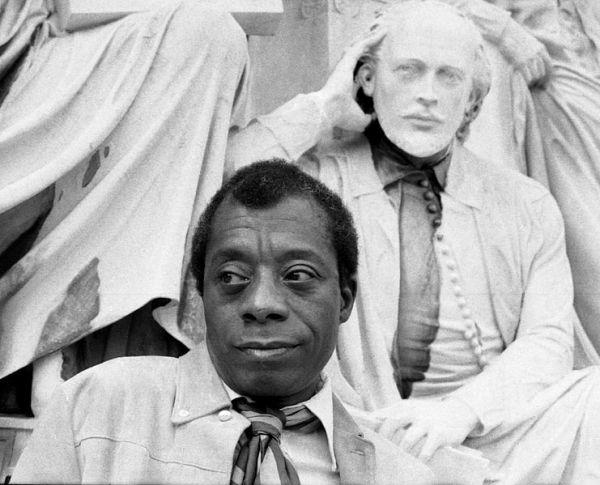
In a sentiment reminiscent of Joan Didion’s observation that she writes in order to gain better access to her own mind, Baldwin speaks to the consciousness-clarifying function of the creative impulse:
"When you’re writing, you’re trying to find out something which you don’t know. The whole language of writing for me is finding out what you don’t want to know, what you don’t want to find out. But something forces you to anyway."
Much of that self-revelation, Baldwin points out, happens not during the first outpour of writing but during the grueling process of rewriting. Echoing Hemingway’s abiding wisdom on the crucial art of revision, he adds:
"Rewriting [is] very painful. You know it’s finished when you can’t do anything more to it, though it’s never exactly the way you want it… The hardest thing in the world is simplicity. And the most fearful thing, too. You have to strip yourself of all your disguises, some of which you didn’t know you had. You want to write a sentence as clean as a bone. That is the goal."
But as essential as that sense of incompleteness may be in guiding the revision process, it must be mediated by the awareness that completeness is a perennial mirage. (Decades later, Zadie Smith would observe in her ten rules of writing: “Resign yourself to the lifelong sadness that comes from never being satisfied.”) Baldwin offers:
"When you’ve finished a novel, it means, “The train stops here, you have to get off here.” You never get the book you wanted, you settle for the book you get. I’ve always felt that when a book ended there was something I didn’t see, and usually when I remark the discovery it’s too late to do anything about it."
Adding to the endlessly fascinating daily rhythms of great writers, which reflect the wide range of differences in the cognitive conditions of the ideal writing routine, Baldwin shares his work habits:
"I start working when everyone has gone to bed. I’ve had to do that ever since I was young — I had to wait until the kids were asleep. And then I was working at various jobs during the day. I’ve always had to write at night. But now that I’m established I do it because I’m alone at night."
Complement The Writer’s Chapbook — a treasure so wisdom-packed that it is a tragedy to see it fall out of print — with Joseph Conrad on what makes a great writer, Willa Cather on the life-changing advice that made her a writer, and Jane Kenyon on what remains the finest ethos to write and live by, then revisit Baldwin on the artist’s role in society < https://www.brainpickings.org/2014/08/20/james-baldwin-the-creative-process/ > and his terrifically timely conversation with Margaret Mead about race and identity. < https://www.brainpickings.org/2015/03/19/a-rap-on-race-margaret-mead-and-james-baldwin/ > Public Library Link < https://www.worldcat.org/title/rap-on-race/oclc/140398&referer=brief_results >
ARTICLE
https://www.brainpickings.org/2016/02/08/james-baldwin-advice-on-writing/ -
Animal BFF
The image above is the submission
Title: Wantagh's Cat
I hear on the beach the following whisperings
Asunal Oolihkmbuyal
Asunal Wiipongweewal
Wantagh NzuksewI made a graphite drawing, developed a poem based on that drawing, and then an ink and then colored the ink. I wanted to use the indigenous language of NYC which is Muscee, of the original inhabitants of NYC, where we get the words Manhattan, Wantagh, Montauk from.
I do not know Muscee and I can not confirm what I read is correct. But from what I comprehend of Muscee, I translated the following into Muscee
The Waters are Blue
The Rocks are Grey
Wantagh is BlackSUBMISSION
https://www.deviantart.com/hddeviant/art/Animal-Best-Friend-Forever-Submission-885747866
ORIGINAL INK
https://www.deviantart.com/hddeviant/art/Animal-Best-Friend-Forever-Original-INK-885748190
ORIGINAL GRAPHITE
https://www.deviantart.com/hddeviant/art/Animal-Best-Friend-Forever-Source-Graphite-885748474I learned the Muscee from the website the following webpage is a part of
http://www.native-languages.org/munsee.htm -
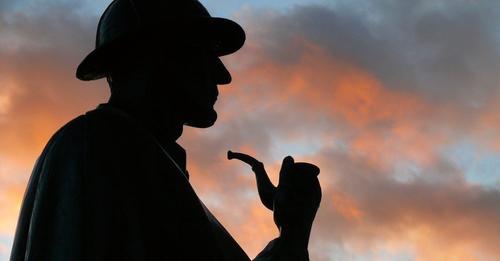
Are Fictional Characters Protected Under Copyright Law?
July 14, 2021 by Kathryn GoldmanToday’s post is from intellectual property attorney Kathryn Goldman (@KathrynGoldman) of the Creative Law Center.
Jack Ryan, the analytical, yet charming CIA analyst, made an appearance in federal court in Maryland earlier this year. The heirs to Tom Clancy’s literary legacy are fighting over him. Unlike in the movies, he’s not in a great position to fight back.
It all started when Clancy signed the publishing deal for The Hunt for Red October where Jack Ryan made his debut in 1984. In a departure from common practice, Clancy transferred his copyright in Red October to the publisher. A few years later, Clancy realized his mistake and was able to negotiate return of the copyright for the book. He immediately transferred the reverted copyright to his company.
Here’s the crux of the current court battle: When Clancy mistakenly transferred his copyright in the book Red October to the original publisher, did the copyright to the character Jack Ryan go with it? Or did Clancy retain the character copyright? In normal practice, the sale of the right to publish a copyrighted story does not stop the author from using its characters in future works.
If Clancy retained the rights to the character when he signed the initial publishing contract, then the rights that reverted from the publisher would not have included the copyright for the character. The reverted rights Clancy turned around and transferred into his company would not have included the character rights. All of which means that the character, Jack Ryan, is part of Clancy’s estate and not controlled by the company he set up.
Jack Ryan is a valuable character with his own copyright separate from the copyright in the book. Everybody concerned, the owners of the company and the heirs to the estate, wants a piece of him, or all of him. And it’s not clear where Mr. Ryan currently resides.
Fictional characters are not listed in the copyright statute as a separate class of protectable work. There’s no application at the Copyright Office for them. But over the years, the law on character protection has evolved.
Courts have held, in certain circumstances, that fictional characters are protectable in their own right.
This is important because characters with independent copyright can be licensed separately from the stories in which they originally appeared. It’s another way for authors to divide their rights to create multiple income streams. That’s the beauty of copyright. It’s divisible. An author can keep some rights and license others. It’s what Clancy did and his company/estate is still doing with the Jack Ryan franchise.
Not every character can be protected by copyright. Stock characters cannot be protected—a drunken old bum, a slippery snake oil salesman, a hooker with a heart of gold, a wicked stepmother, a gypsy fortune teller, and so on. They are essentially ideas for characters, vague and lightly sketched. Copyright does not give anyone a monopoly on ideas. Protecting stock characters would prevent as yet untold stories from being told. Depriving the world of new stories is exactly the opposite of what copyright is intended to promote—the creation of more stories, more art.
A character must be well delineated to be protected.
It must have consistent and identifiable character traits and attributes so it is recognizable wherever it appears. Think James Bond and his distinctive character traits: his cool demeanor; his overt sexuality; his love of martinis “shaken, not stirred”; his marksmanship; his “license to kill”; his physical strength; and his sophistication. Bond is protected by copyright. The Bond character is identifiable regardless of who depicts him.Defining the well-delineated character can be difficult. Characters that are central to a story tend to change. They evolve. They are built up throughout the book until they are fully formed in the mind of the reader. Without character transformation there is no hero’s journey, no story. Characters can become more delineated and more protectable over the course of a series of books. Bond developed over the course of 14 books written by Ian Fleming and continues to develop on film.
Characters that are less developed are less likely to be protected. Those characters are less expression and more idea. There’s a gray area that needs to be navigated when balancing the protection for original characters but leaving character ideas in the public domain free for all to use.
Public domain characters cannot be protected
But new characters created from public domain works can be protected. Consider Enola Holmes, the younger sister of Sherlock. The Sherlock Holmes stories have been slipping into the public domain for years now, to the chagrin of the estate of Arthur Conan Doyle. The creative elements of Sherlock Holmes stories that are in the public domain can be used by others to build new stories.Enola Holmes was introduced to readers in a series of young adult books written by Nancy Springer. Enola does not exist in the Conan Doyle canon; she was created by Springer. She has distinctive traits (high intelligence, keen observational skills and insight, skills in archery, fencing, and martial arts, an independent thinker who defies Victorian norms for women) that combine to make her well delineated and protectable.
Another wrinkle: “The story being told” test
The “well delineated character” is the most widely accepted legal test used to decide whether a fictional character is protected by copyright, but it is not the only one. The other is “the story being told” test. Sam Spade is responsible for this test.Dashiell Hammett created Sam Spade when he wrote The Maltese Falcon. Hammett licensed the exclusive rights to use the book in movies, radio, and television to Warner Brothers. Hammett later wrote other stories with Sam Spade. Warner Bros. complained that it owned exclusive rights to the character and Hammett couldn’t write about him anymore.
Ironically, the court protected Hammett’s right as the creator to use Sam Spade in future stories by deciding that the character was not protected by copyright. Sam Spade is just a vehicle for telling the story and is not the story itself. He is the chessman in the game of telling the story. It was the story that was licensed to Warner Bros., not the chessman.
A character is protected under the “story being told” test when he dominates the story in a way that there would be no story without him. This test sets a high bar for character protection. To protect the character, the story would essentially have to be a character study. The Maltese Falcon is not a character study of Sam Spade.
An example of character protection using the “story being told test” is the Rocky franchise. A screenwriter wrote a story on spec using the characters Rocky, Adrian, Apollo Creed, and Paulie. The work was considered to be an infringing use of the characters. The characters were protected because the movies focused on the characters and their relationships, not on intricate plot or story lines. The characters were the story being told. The writer could not avoid the infringement touchpoint of substantial similarity when he took the characters and used them in a new storyline.
In summary
Fictional characters can lead a new and independent life completely separate from the original work in which they appear. They are an additional creative asset in a writer’s intellectual property portfolio. There is no straight forward way to register for character protection with the Copyright Office other than as part of the larger work. Authors will be well served to think about protecting the rights in their characters when signing publishing contracts and licensing agreements.Kathryn Goldman
Kathryn Goldman is an intellectual property attorney and Editor-in-Chief at the Creative Law Center. She represents, writes for, and teaches creatives and entrepreneurs about copyright and content protection, trademark basics and branding, and business building. She can be reached at Kathryn@creativelawcenter.com.ARTICLE LINK
https://www.janefriedman.com/are-fictional-characters-protected-under-copyright-law/COMMENTS IN ARTICLE
Fan fiction is a hot button for many professional writers. Broadly speaking, if the fan fiction is written by a non-professional and is non-commercial then it is more likely to be considered fair use, an exception to infringement. However, even if the work is not professional and not commercial, many writers consider fan fiction an infringement.
My purpose in writing this post is to make writers aware that their characters can have individual protections. It is a concept that should be considered when licensing the work, in an option agreement for instance. I have seen requests from producers to option not just the work, but certain characters in the work. Writers need to consider how they want to deal with those requests when they come. You do not need a multi-million dollar franchise to start thinking about it.I will say one thing first, lawyers always reveal the most interesting legal battles in various subjects. I knew of none of these incidents. Thank you Ms/Mrs Goldman and as always thank you Jane Friedman for sharing.
I admit I wanted to have my first fan fiction this year and I failed. I like to create something I never did before each year. But this article made me realize I made two errors.
My first error was my inability to make a fan fiction. I am an original creator and every time I tried i kept making a world or characters that have no plot connection to the source fiction or characters. Imagine a story supposed to be set in the same world as harry potter but is primarily concerned with a magical detective agency in calcutta during the mughal era where the magicians don't use wands and the plot never goes to europe or the usa or mentions any spells in harry potter or any of the references of the movies or books. Is that fan fiction? or merely fiction that a writer has to say is based in the harry potter world?
But after this article, I made a second. I didn't put enough thought into the whole activity of fan fiction, especially to work that is not in a public domain. I am glad I failed to continue the use of the world or characters in the material I wanted to make fan fiction for. I still will like to try it. but I will start with a better dialog with the author. that is first
COMMENT ON FACEBOOK POST
Wiley Saichek
Jane Friedman My client Chelsea Quinn Yarbro (we ran an excerpt from her book on writing a few years ago) is one of those writers who are extremely protective of her characters and does not grant anyone the usage of her characters in fan fiction, even in amateur publications, not for profit outlets. From her point of view and her lawyers at the times, distribution is a key factor, not whether the infringing fan writer makes any money off of it.
My personal suggestion is if anyone wants to use a character they did not create, ask the copyright holder's permission and respect their decision. I.e. Quinn has written stories in the Holmes universe but got permission from the estate and had rules to follow.
Quinn's most serious case of infringement happened in the 1990s, she wrote two essays about it in a SF publication in 1992. In her case she was asked and said no, and the fan writer wrote it anyway and it ran in a fanzine with a note acknowledging CQY declined permission but they were going to run it anyway and hope she will forgive them. I think they actually used three of her recurring characters.
Many fans and writers disagree with how she handled it, but she has zero sense of humor about it. -
Well... it is another Friday, another day to love, to Oxum, Oshun, Freya, or Venus, another day to Kizomba!
I saw a few wedding kizomba's before , posted one, and I will be blunt; they were not the most romantic; this Kizomba was choreographed from Dennis PaSamba. -
Swing!
by Oscar MicheauxPublication date 1938
Usage Public Domain Mark 1.0Creative Commons Licensepublicdomain
Topics race film, independent, backstage musical, melodrama,
Publisher Micheaux Film
Language English
Mandy Jenkins, an African American cook for a wealthy white family in Birmingham, Alabama, discovers her husband Cornell is having an affair with Eloise Jackson. When she confronts her husband and Eloise at a nightclub, a violent fight ensues. Eloise leaves Birmingham and relocates to Harlem, getting a job as a cabaret vocalist under the stage name Cora Smith. She is followed to Harlem by her husband, Lem, who gets mixed up in the local crime scene. Mandy also arrives in New York, having left Cornell. She gets a job as the wardrobe mistress at the cabaret where Eloise is performing. When Eloise breaks her leg during a drunken fall, Mandy is recruited as a last-minute substitute. (Adapted from Wikipedia.)This film was released without copyright notice, nor was it ever registered with the copyright office. Thus, it is and always has been in the public domain.
Complete version
https://ia800603.us.archive.org/34/items/swing-1938/Swing.ogv
Incomplete
-
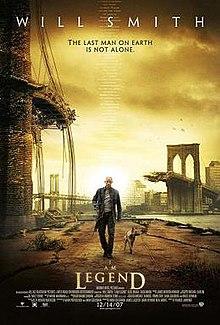
THE PROBLEM HUMANITY HAS WITH RICHARD MATHESON'S "I AM LEGEND"
To be honest, the video poster below has flaws. I read "I am legend". MAtheson in the video said the real problem and I amend it is with most of the movies; said problem is, it isn't his story.
The last man on earthThe Omega manThe potential Arnold swartzenegger I am legendWill smith's I am legendOf those films only the last man of earth actually resembles anything to MAtheson's story. The question is, what is matheson's story? the cheap reader thinks the story is about Neville. the wise reader knows the story is about humanity. Matheson's story post a simple question. What if a Virus kills or makes extremely sick all of modern humanity save one. Modern humanities technology fails to undue the affects from the virus . Modern humanities technology fails to stop the deaths from the virus. One human being is left alone amidst two other human being types, the dead or the infected.Charlton Heston/Arnold Swrzenegeer/Will Smith saw in the story, idolatry to the individual, perseverance to modern humanity. But the truth is, Neville for all of this loneliness has one great flaw. He is convinced humanity is doomed. He is convinced humanity will die. He sees himself as the last man. The loneliness /his culture/the human society he was born or raised in can't comprehend the simple truth. Humanity survived. A fourth type of human exists in the book, slowly growing in number. The civilized. Neville, the dead, the insanely infected, the civilized carriers, are the four human being types at the end. And Neville who has become completely uncivilized through years or loneliness plus deadly habit plus negative culture he was raised in, can not exists side the civilized carriers. Moreover he is feared by the civilized carriers, plausibly. I will restate but I will go to the three films that miss this. HEston's film like Will smiths negate the idea, the primary concept, that Neville is the last human like myself. Sequentially, the big failing in telling the story from the book. A main plot point is that modern human society failed, completely. It tried, it worked hard, and it failed. BUT, Nature is greater than human technology, I didn't say GOD , I said Nature, and humanity as a child of nature adapted through natural means. I imagine ridley scott wanted swrazenegger to be killed by the victorious vampire-esque infected people. A somber thought that the studios did not like. But, scott or the studios have it wrong. Humanity survived. You see, one of the problems with human beings and the idea of apocalypse is the myth that if humanities technology fails, all is doomed. but all isn't. Women , even infected with various ailments, have children. Some people will act undifferent while carrying a virus that will make others incomprehensible. NEville is so convinced as is most of the producers of the films that humanity is finished when technology fails against a virus that they forget humanity is very old. A virus can kill many, most, but no virus ever killed all humans. No virus has ever killed the entirety of humanity and after every single viral spread the humans who lived... lived... that is what I am legend is about. It is a creation story told from the angle of the last person from the old community. In my mind I can see Obatala/Zeus/Amatarasu/Quetzecoatl as human beings from an old community that are legends that have been given godhood, a controller of nature, a very human mental construct. Matheson could had told the story from the angle of Ruth, who is a child born from the infected who is infected herself but can live with the virus. But he didn't want that, the trick of the story , is we are getting the creation story from the angle of the last of the old community, the one who is legend. ... One of the finest lines in the book, is when NEville asks ruth , to guide the future humanity, don't let them make the same mistakes. NEville comprehends the technology he needed to change, to improve, was his culture. Culture is what you want to grow. He realize at the end, his heritage, what you carry was the technology that was lacking. Not, epidemiology or biology or the scientific method. His culture. His ability to accept change he can not control or escape from or immigrate from. Change that will destroy the community , the humanity he knows. A culture that can accept that a new humanity will exists, it will survive through what the old could not. And lastly, NEville realized what all the movies, including even, the last man on earth, fail to show. NEville had a chance to teach, he had a chance to guide the new humanity but he was busy being angry at the death of the old community that he is the last representative of, angry that he was alone, angry that no one else shared his similar experiences, that he spent all that time killing or hunting or treating the coming new human community as villains, merely for living with a virus, overcoming the failing from the virus, he hated.IN AMENDMENTMany humans last year, 2020 , and many humans this year, 2021, are just like Robert Neville. From the beginning, I said everything will be alright last year. Not cause I am a mental expert or am wise but cause I think toward the uncomfortable sometimes. I have learned to that through experience. But most people were not communicating that experience. They were having the same inner monologues NEville had. Communicating the same fears NEville had.My grand mother died, my grandfather died, my mom died, my father died, my wife died, my husband died, my daughter died, my son died,my granddaughter died, my grandfather died, the stores went out of business, I lost my job, I'm scared! we need a vaccine, we need social distancing, we need masks, we need remote learning, we need remote labor, we need government assistance, we need the businesses to reopen, we need global trade to begin again, people who don't act like me are stupid, people who don't act like me are traitors, people who don't act like me are murderers, people who don't act like me are dangerous... all of that talk is Neville speak. Neville is preoccupied with who has died, what vaccine or scientific assessment or tools he can derive, how different the infected act compared to him. NEville has no thought that everything is alright. NEville can't simply live his life peacefully, calmly, unafraid. Why can't neville accept that if he can live with the virus absent masks, absent vaccines, absent anything even companionship, that maybe others can too, that maybe humanity can. The lesson in the story is what hollywood is too afraid to tell. what most in the paying audience, which is not most in humanity, are afraid to see. What if human technology or human communities all over the earth fail completely and humanity survives and thrives? -
Sunday Business Sermon: Negotiation (Ask for More)Jane has been negotiating contracts as an editor and freelancer for 15 years. She shares easy-to-apply tips and questions for your next negotiation, plus explains the basics of how book and magazine contracts work.
-
My , Artist be like, three panel comic
https://www.deviantart.com/hddeviant/art/My-Artists-be-like-886143892Spider man tutorial
https://www.deviantart.com/hddeviant/art/My-Tutorial-Spider-man-886143284 -
Hideaki Anno's "Return of Ultraman" (Eng Subs)
Hideaki Anno's 1983 college parody film of Ultraman, as part of Daicon films. Be sure to turn on the English subtitles!
Hideaki Anno is the creator of Evangelion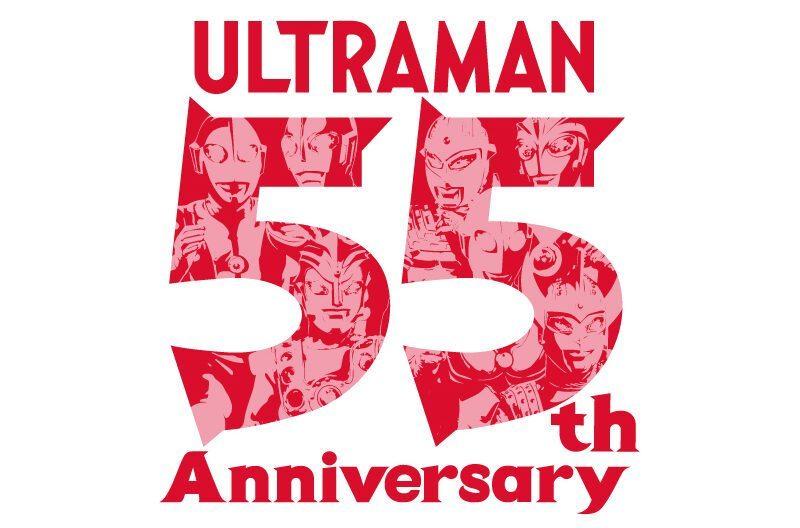
-
Cowboy day
What is your favorite black cowboy tale?
https://aalbc.com/tc/blogs/entry/261-good-news-blog-stories-through-a-year/page/2/?tab=comments#comment-938
-
Sparks Out: A Fawn & Briscoe SF Mystery
Violence happened every day in The District. Blood currency was popular.
That didn’t explain why Dr. Leonard Cho was beaten to death with his umbrella in downtown sector.
Inspector Regulators Fawn Granger and Briscoe Baker have been through a lot of strange cases, and it has left Fawn sparks out. Suffering from PTSD, the worn inspector has one last case to finish before moving to the Southwest Territories, to a ranch, and to what she believes will be peace. What she and Briscoe discover is a scientist obsessed with cybernetics, an organization guilty of human rights violations, and a territory indifferent to the health and wellbeing of its citizens.
Will her investigative flame be relit, or will this final case be her last?https://mochamemoirspress.com/product/sparks-out-a-fawn-briscoe-sf-mystery/
-
NANI VOLUME 2 IS FINALLY ON SALE! Head over to the Kugali store https://kugali.com/products/bundle-nani-vol-1-2-paperback?variant=40543906103447
NANI is the tale of two sisters, Mina and Lamin, who after being kidnapped in modern-day Nigeria are mysteriously transported to the mythical world of Samma. In this new world, inspired by African mythology, their martial arts training may not be enough to survive when they find themselves in the middle of a conflict bigger than any of them could have imagined
...
Grab yourself a copy if you missed the Kickstarter, or if you just wanted a spare! You can get softcover AND the collector’s edition hardcover, but Collector’s edition copies are VERY LIMITED so grab one quickly!
-
Why are fully vaccinated people testing positive for Covid?That question is the problem. I think the greatest enemy in the sars-cov-2 cultural wars is modern media. Modern media is not designed to inform. It is designed to advertise. A friend of mine showed me a cartoon shown to children about the sars-cov-2 virus. The sars-cov-2 virus is not a monster with mashing teeth. It is not the bad guy. Viruses are apart of life on earth. Yes, they have negatively influenced many species and yet, rarely have they eliminated any. I do not have proof but I bet the human species has been more detrimental to life on earth to all life on earth than the entire family of viruses. Ask the creatures in the oceans by human waste or hunting. Ask the spirit of the many deleted human communities or non human life on land or can fly, by human means.What are the truths?
- The point of a vaccine is to help, it is not to guarantee, it is not to defy illness or death.
- Every single vaccination effort in humanity was never administered to over 50% of humanity in completion or under a government.
- Handling the death of loving ones is not served attacking others by suggesting a false claim of responsibility. Your loved ones didn't die because of anyone else, being vaccinated or unvaccinated. They died cause they were not strong enough. Many human beings in modernity have a hard time accepting what is daily comprehended in the wild. Death has no masters and one must treasure the moments cause they may never come again
- Humanity survived most of its many viral intakes incontinentally or intercontinentally absent vaccines, but nearly all had an extremely negative effect on finance on communities on governments. The virus or vaccine or the vaccinated are not why governments/financials/communities are in upheavel, The reason is human dysfunction compiled over a lot longer time.
ARTICLEWhat we all can learn from Robert NEville
-
I finished watching the documentary linked below concerning Buddy Guy and while I didn't learn anything I didn't know about the music industry, I did learn about some personal information on Buddy Guy's life i did not know. I think those unfamiliar with the Blues will get to see many faces they never saw or names they never heard or hear some music as well. But, the following prose is based on a comparison I heard between the stated documentary side one about daft punk I saw.
In both documentaries, a truth was presented. When Daft Punk won the best grammy award, they said, people in the usa are shocked by the music they play but the music they play was started in the usa, in the black community.
In the buddy guy documentary, buddy guy admits, it was the rolling stones + eric clapton side other british acts, simple admittance that they learned from listening to black blues musicians from the usa, that changed his career.
House Music side the Blues were both initiated by the Black community, a race based on a phenotypical range of skin not geographic forbearance for those who do not know , in the USA. The two styles have a century or more distance between their starting points. By these two films, people in the music industry are admitting that the white < phenotypical range not geographic forbearance> community in the usa for over a century, covering the entirety of the commonly named 1900s, existed side a black community they knew and know nothing about.
Why did I mention this? In the USA many people are always talking about the unity of the statian <from the usa , a term to my knowledge first used by mark twain, a white man> community. I read so many articles where people are suggesting the USA has a unity that is breaking. But, is that true?
Music isn't a blade or a bomb or an elected position or a revenue earning firm. Music is always an easily spreadable thing in human culture. Maybe the problem in the USA today is a myth of unity or good neighborship exists in the usa, that is not true...
What say you?PBS site- A song
The Blues Chase The Blues Away from Buddy Guy is free to listen to
https://www.pbs.org/wnet/americanmasters/stream-buddy-guy-blues-chase-blues-away-documentary/17954/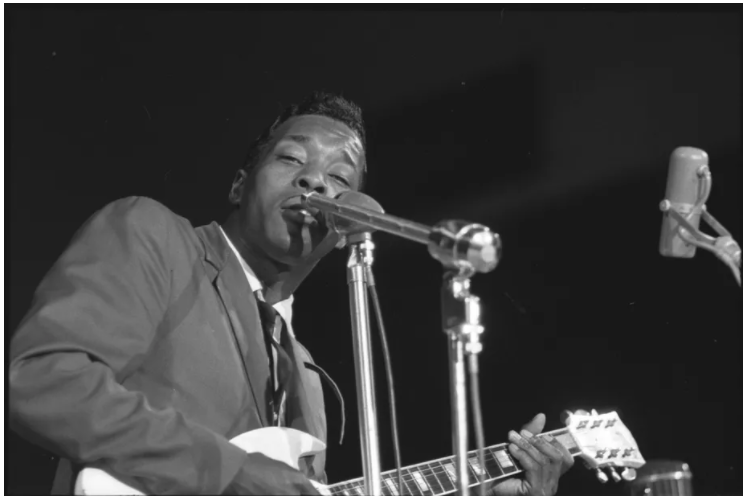
-
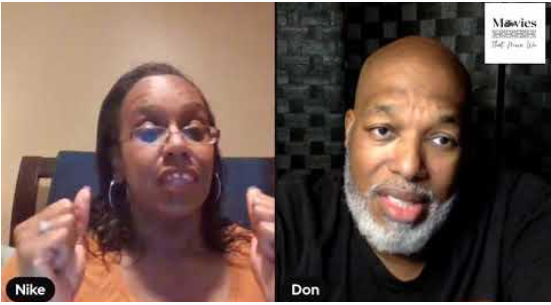
My intial reply to the video
nina simone was a polymath... the problem with black people when we gather in public is, for events meant for music or community, march on washington/summer of jazz/ jazzmobile/million man march/black film festival.. black people don't produce violence. But, we do produce violence when the tipping points are reached. ... I disagree with both of you. I don't think the lack of media outlets wanting to display the Summer of Soul is a shame. Ownership matters folks. You both mentioned how Gil Scott Heron or the Last Poets were not on the bill. But that was and is part of the problem. White people own media outlets that allow all spectrums of the white community to speak. Name me one Black owned media outlet that serves five unique black segments in the black community? Yes, my parents remember that concert. To be blunt, Harlem has a long history of similar events. That famous photo at Duke Ellington's house is not a joke. Harlem between the 1920s -1970s had the greatest collection of black entertainers for a region in any city in the usa. The recording of the concert was a surprise for my parents. ... Don, no one is a complete encyclopedia:)
Someone somewhere in the internet stated the Black community ended the great era of Black Music in the 1970s, I oppose that position. The following is my reply
We didn't end it. All musical eras end. To be blunt, the black community in usa had many great musical times after the war between the states. The st louis/to harlem slide jazz era. The big band era. The R&B initial era. Motown. Many great black songwriters in each of those eras. We didn't end , we changed. Black people in the usa's music changes as we change. The reason why we made the blues is cause right after the war between the states, many of us had a sadness, a blue mood. When we started growing more financially positive, actually getting whites to allow us to own businesses or get paid to do ork while still being nonviolent <not saying all black people wanted that but I comgress>, we turned the blues into rhythm and blues. After world war II when the black community oddly enough had large financial growth for individuals, we created rock and roll from R&B which is from the Blues. We created Funk as a blues version of the motown sound. Where motown was manicured black music for the white audience, in the same vein as scott joplin's minstrel music, which he did alongside his ragtime works. Ragtime was in my view, a piano version of jazz, which was started with horned instruments in new orleans. Jazz progressed from the northern expansion. Starting from the storyville's of new orleans to St Louis, to Chicago to HArlem, to every bar from Shanghai to Berlin to Rio de janeiro to calcutta to Cairo all around the earth, jazz was played at one time, a rare achievement for one art form. So much so that colleges throughout humanity teach jazz. Many surviving jazz musicians were able to financially survive being the first jazz teachers in schools where only white jazz teachers may exist today. No, black music changes as black people change. House Music comes from the urban black community, which in the vein of funk fuses all the many prior musical forms from Blues or Jazz. But with a larger technological capability than Funk, which began using tech in unique ways for music. We didn't end it. Today you can hear way too many excellent black blues musicians under 50, black jazz musicians under 50. White owned media companies dominate the industry and they prefer pop music, which is hat Motown or the Ragtime was. All three are intended to appeal to mass audiences, be good to sell. All three evaded or try to evade cultural friction. So, all is good, the black musical heritage lives in the black community for me, and continuous to grow or change, becoming more global, having more linguistical width than in the past, more cultural variance. All is good.
Movies That Move We video Reviewhttps://www.youtube.com/watch?v=6L1bNVo8gYU



